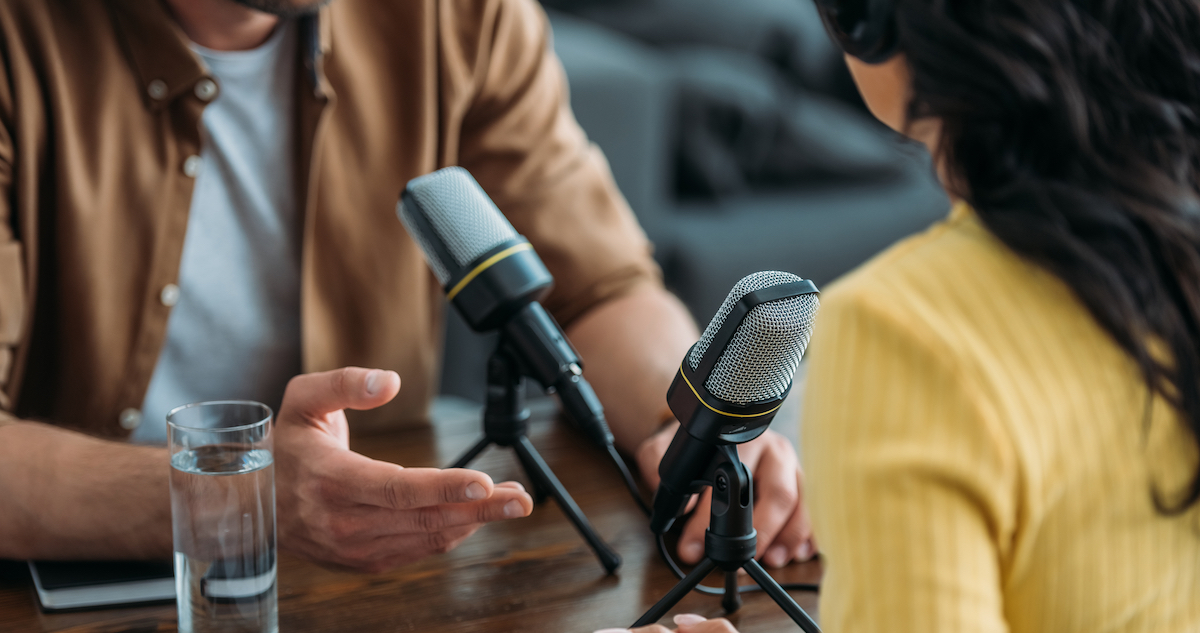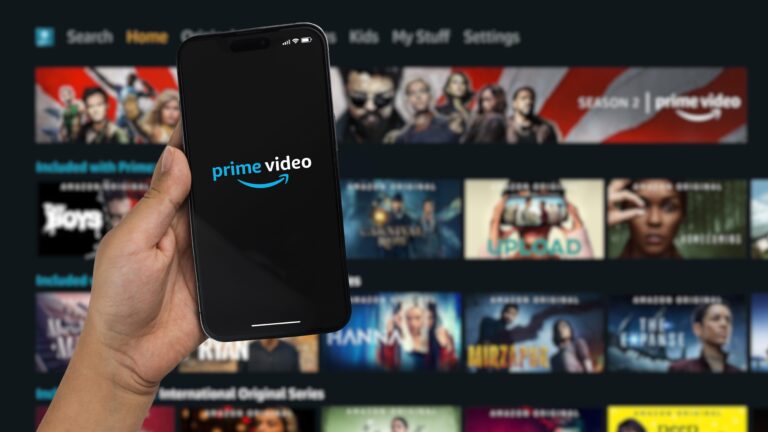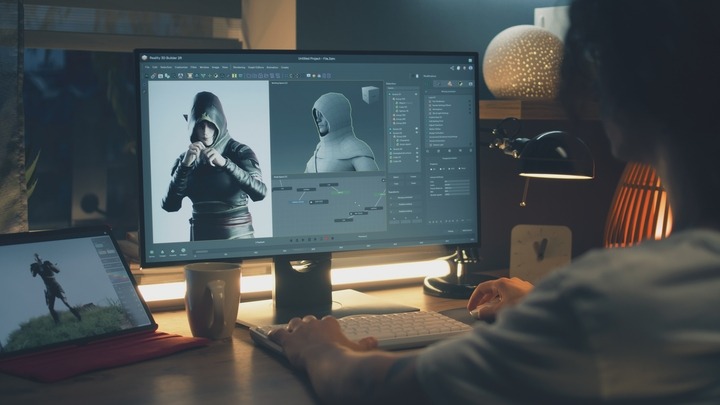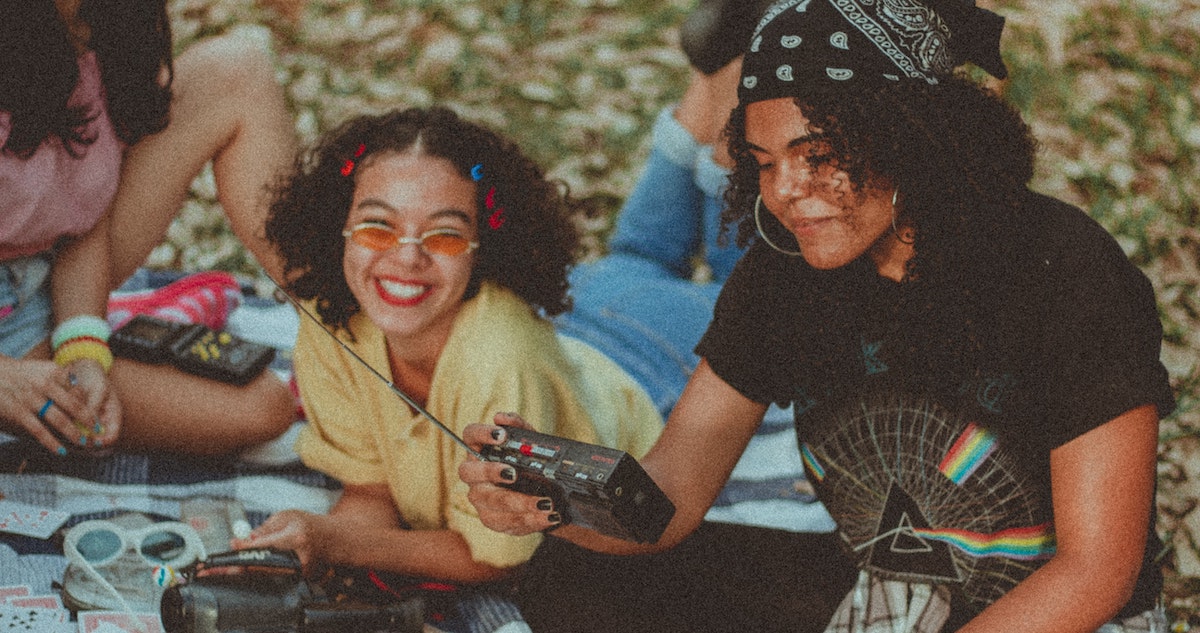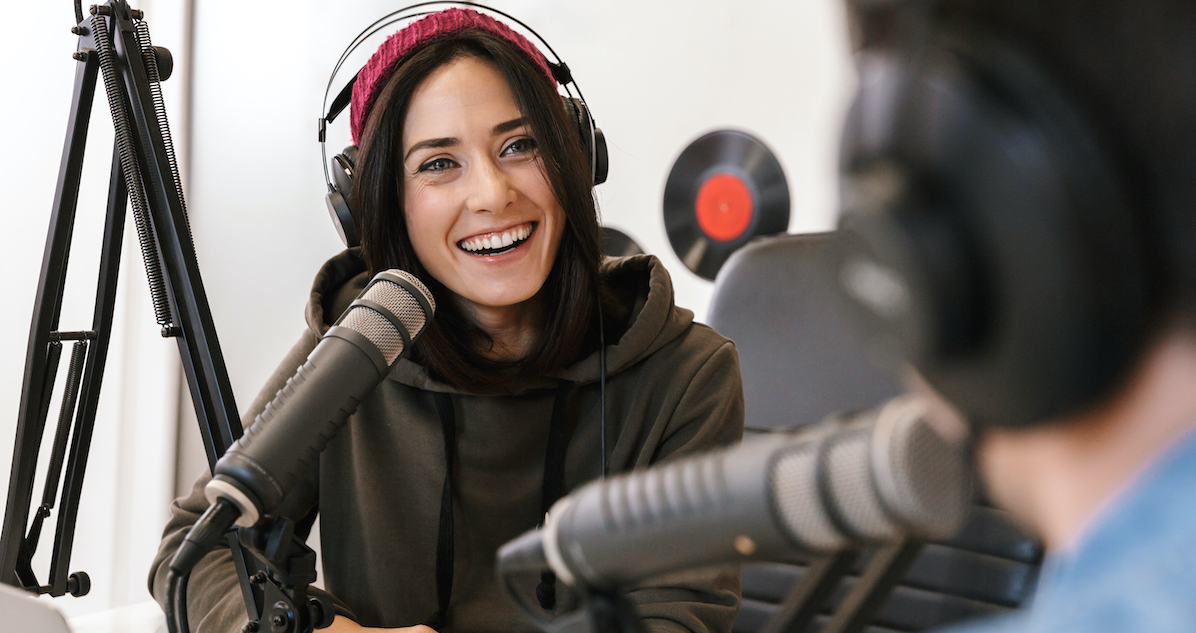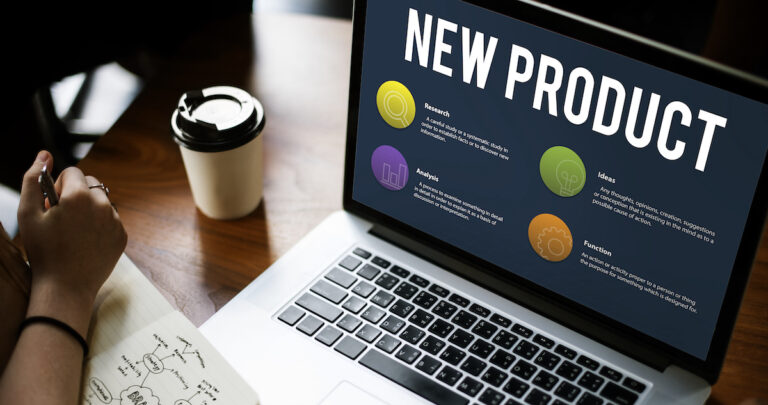There’s no denying it: knowing how to start a podcast has become all the rage. According to a report by Nielsen, 50% of Americans are now die-hard podcast fans. Podcasting is taking the world by storm, one audio at a time. So, if you want to know how to start a podcast and make it stick, read on!
Podcasting is a pretty straightforward process with a few minor hurdles along the way. The good news is that actually starting one is a simple enough hurdle to overcome. However, producing a podcast with a large following does require time and effort, and the technicalities involved matter more than you realize. As does the content.
What is a podcast

Some may argue that a podcast is essentially an MP3 blog. A type of audioblog or soundblog. Audioblogging to an extent is obviously related to podcasting, but it’s not quite the same thing.
Now, there are several reasons why podcasts are popular. But, the main reason is easy access. People can listen to podcasts in almost any environment. And unlike reading, you don’t need to invest as much concentration. A study also found that podcast listeners are more likely to follow social media companies and brands. As a result, they avoid websites that hone in on products or services. This echos the need for better insight into how to start a podcast.
Of course, this trend is clearly successful because various brands leverage podcasting as an effective marketing tool. Some benefits of knowing how to start a podcast are:
- It increases brand reach and boosts your customer base.
- Podcasts are affordable and easy to produce.
- A podcast is time-saving and mostly convenient to create.
- It serves as a forum type discussion to interview experts.
- Podcasts establish trust with listeners which increases customer growth.
What do you need to start a podcast

If you want to create a new marketing channel for inbound leads, you need to know how to start a podcast. It’s one of the best tools available to brands of all sorts. This is especially true if you want to have a rockstar brand on your hands. And let’s be honest, who doesn’t? So, what you need to start with is a strategy. And the key is to follow a structured approach. Stream-of-consciousness spontaneity is likely to do you more harm than good. Why? Well, your podcast may lose focus.
When this happens it could devolve into an exchange of inside jokes that your listeners either won’t get or won’t find funny enough.
The dos and don’ts of podcasting
Here are some fundamental dos and don’ts on how to start a podcast.
Do:
- Plan each episode’s content before recording.
- Use a podcasting host to upload consecutive episodes.
- Make episodes easily accessible for listeners.
- Utilize creativity. Explore your creative license by developing engaging content.
Don’t:
- Be too spontaneous. It leads to rambling which makes for confusing content. Remember spontaneity is good, but planning is better.
- Be too much of a stickler. Keep in mind that a little variety every now and then can interrupt regular broadcasting to offer something thrilling.
- Be overly creative, eccentric, or uncontrolled if this doesn’t appeal to your target audience. The audience is king. Only give them content they seek.
- Over burden yourself. Knowing how to start a podcast takes patience, effort, and loads of ideas. So, don’t put too much pressure on yourself to constantly spout ideas. Consider brainstorming and collaborating with others. This expands your content reach which will filter into your audience pool.
Now that you know how to start a podcast, let’s look at 3 platforms you can kick start your podcast on.
How to start a podcast on Youtube
If you want to have a successful podcast with a huge audience you must offer access and convenience. The golden rule of podcasting is to make sure your podcast is visible to your audience. If they can’t find it, they won’t listen to it. And if they don’t listen to it, they won’t support your brand. By not supporting your brand, you’ll eventually go out of business. It’s really that simple.
YouTube podcasts don’t yet allow for audio files, so you’re going to have to create video files. Converting audio files to video is a simple enough process. However, no one wants to watch a blank screen. So, you’ll also need to add a visual element of some kind. On the plus side, your image doesn’t have to be grandiose in any way. You could use a car or sports image. Or something as recognizable as color bars. Then along with the picture screen, the podcast will play in the background.
These steps will help you learn how to start a podcast on YouTube:
- Convert your MP3 or audio file to a video file.
- Add an image of your choice to fill the screen.
- Host your podcast live with video by using your computer webcam.
- Prerecord your video podcast and upload it to YouTube as a video file.
How to start a podcast on Spotify
So, you’ve found the topic you can talk about for hours on end. Awesome. All you need now is to launch the final product. And Spotify could be just the place for you. It’s now one the top platforms for podcasts. According to Statista, Spotify podcasts just topped Apple podcasts in the U.S. with almost 32.5 million monthly podcast listeners compared to Apple’s 28.5 million. If you know how to start a podcast on Spotify, the process will be a pretty cut and dry affair. However, Spotify doesn’t actually host podcasts. So, you’ll need to provide a link to your RSS feed to get your podcast on Spotify.
Here are a few of Spotify’s podcast checklist requirements:
- A relevant title.
- Cover image
- Less than 12 hour episodes
- MP3 format
- Key details. (language, genre. country, etc)
Steps to follow
Once you have the details mapped out, it’s time to start podcasting.
- First, log in to Spotify for Podcasters using your Spotify account. Alternatively, if you have no account, SIGN UP and create one.
- Second, choose GET STARTED
- Third, paste the link to your podcast’s RSS feed.
- Fourth, Spotify will send a verification email to the address from your RSS feed.
- Fifth, paste the 8-digit code from the verification email in the submit form.
- Sixth, add your podcast info. (country, genre, language, etc.)
- Finally, review your info then click SUBMIT.
After you hit submit, Spotify will display your podcast’s Spotify URL. However, it does take a few hours to reflect in the app. And that’s that. How to start a podcast on Spotify in a nutshell. You can now go ahead and start your podcast; no special skills or fancy equipment required.
How to start a podcast on apple?
Apple Podcasts, or iTunes podcasts as it was previously known, is an Apple podcast platform. It has both free and premium options for listeners and podcasters. There’s also a desktop and mobile app available for download. Getting started with Apple Podcasts is super simple and hassle-free. Here are some of the steps to follow if you want to know how to start a podcast on apple.
- Create your podcast and RSS feed.
- Sign in or create your apple account.
- Submit your RSS feed to apple podcasts.
And, you’re done. Starting a podcast today on most platforms is really as simple as create, sign in, and submit.
How to start a podcast and make money
How to start a podcast and made money is one of the most popular podcast questions for newbies. After all, it is only natural to wonder if an investment will be worth the payout. However, the reality is that not all podcasts are financially lucrative. For your podcast to make money people must choose to watch or listen to you. This takes work. On the other hand, hard work always pays off. So, if you put in the work to create engaging content you will achieve top-level results.
Monetizing your podcast
There are a few different ways of monetizing a podcast. And the figures depend largely on followers. Here are a few of the top results.
- Ads and Sponsors
This is a fairly standard method of monetizing a podcast. Hosts will promote sponsors or advertisers on the show. The more popular the podcast, the greater the sponsors and advertisers. - Affiliate sales
This is similar to sponsors, but affiliates only get paid if they sell something. It works almost like a sales commission. - Create a program
You can effectively make money by teaching a niche. Try to create your own program or course that appeals to listeners. If they see the benefit of your offer, you can attract a host of paying customers. - Direct payments
Offering subscription and membership levels can attract paying listeners. Your listeners will have the option of a free service or a premium one with added benefits. - Sell something
Hoodies, caps, water bottles, and notebooks are just a few examples of products you could sell to listeners that follow your podcast.
Keep it catchy
So, now you how to start a podcast and make money. But you still need to bring it all together. Before you purchase equipment for podcasting, you’ll need to zero in on a niche, name, theme, and design. This helps build a stronger brand. It also lets you cater to a target audience. After all, the ultimate aim of this engagement strategy is to get paying customers, right?
Remember that podcast listeners are almost always looking for expert advice. So, make sure to curate content along those lines. Interviews, case studies, and visual storytelling are some of the strongest podcast strategies to run with. Spend some time on finding a catchy name, theme, and design for your podcast. They matter. If you don’t invest time in making a podcast, people will be unlikely to spend their time listening to it.
What equipment do you need to start a podcast
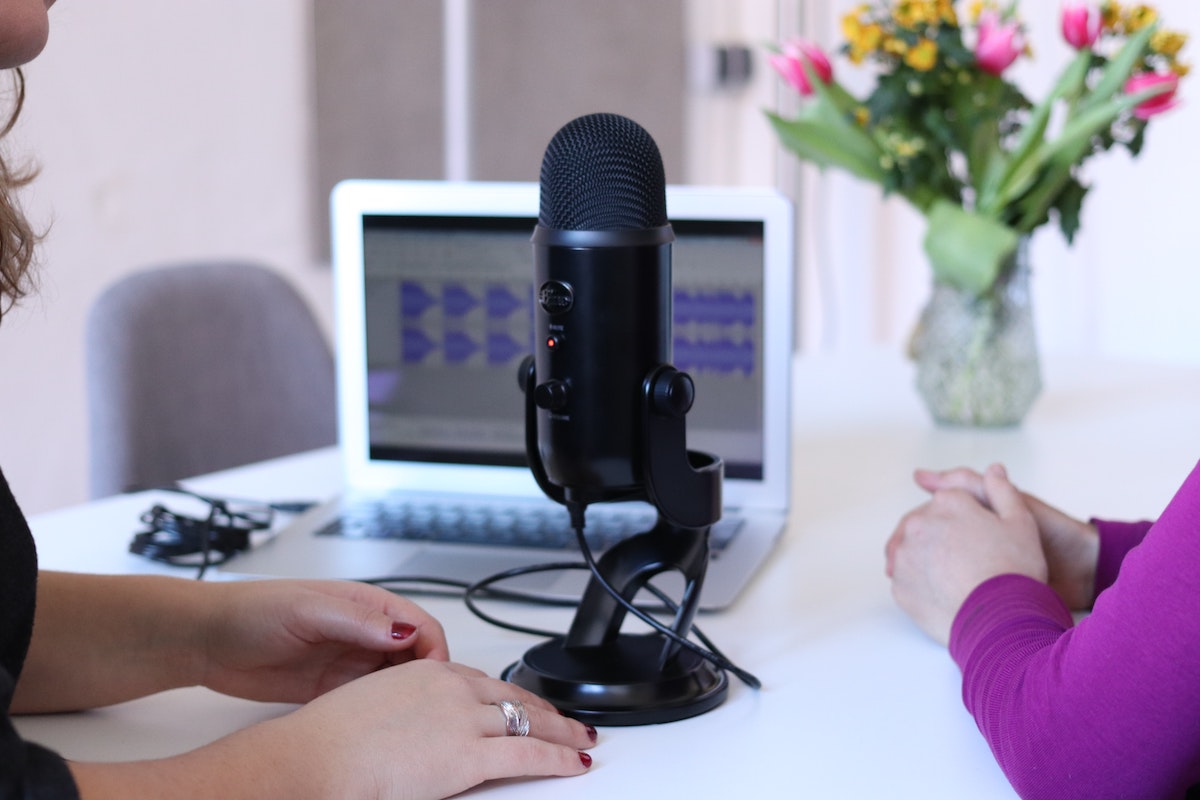
Your laptop microphone won’t always do the job. So, get a really good microphone before you start. Now, it doesn’t have to be expensive. Given the popularity of podcasting, good quality mics at affordable prices are now available. A USB microphone should do the trick initially, but if quality is super important to you, then don’t be too attached to USB’s.
These mics suffer from inherent noise. Get a decent mic along with a computer interface. A good idea is to have a second mic for an interviewee. Sharing is definitely no longer a thing as it makes for move sound quality. Pop filters are another must-have so you can avoid those irritating air blasts caused by plosives. Voice actors call this ‘popping’. Other than the hardware, you’ll need to get hold of editing software so you can tidy up and package your podcast properly.
Final thoughts on how to start a podcast
Now, that you know how to start a podcast, bear in mind that the voice of your podcast is the voice of your brand. Unless you’re capable of voice overs, it’s best to involve a professional voice actor. Especially for your podcast intro and outro. As a business owner or a marketing manager, you might feel compelled to be involved because it adds authenticity. This is true. Nevertheless, listeners will switch off if you’re not nice to listen to.
Also, keep in mind that once you’re involved, you need to stay involved for the sake of consistency. If you can’t because you won’t have the time, rather let a pro handle it. A seasoned voice actor such as those you’ll find on Voice123 can help you build a strong brand name. They know how to engage an audience and are well-versed in the art of storytelling. And that’s it. May your podcast be a huge success!

